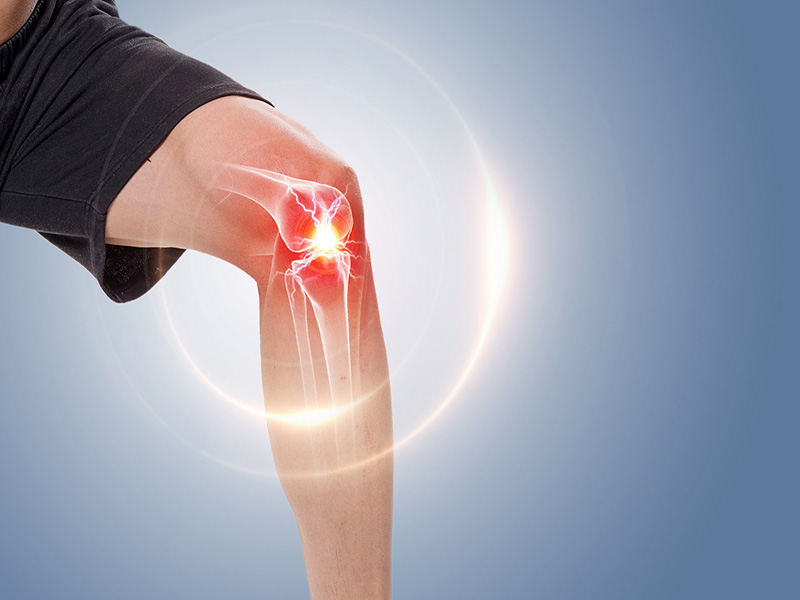Categories
- Blog (808)
- Customer Purchase (378)
- Best Sarms stack (6)
- Weight loss peptide (39)
- Other supplements (35)
- Home made (6)
- Testosterone & TRT & AAS (75)
- PCT (28)
Whether you are a new bodybuilder or a veteran bodybuilder, if you often feel knee pain during your workouts, you need to pay special attention. The causes of knee pain are divided into several areas, such as ligament damage, meniscus damage, how to distinguish the vulnerable areas and how to solve these problems, we will continue to see.

The majority and most serious cause of knee pain is ligament damage. One of the most severe and serious injuries that can cause knee pain is a ligament injury. This basically happens when you tear the ligament that connects the femur to the tibia. If you are not sure which bones are which. The femur is the bone of the thigh and the tibia is located in the lower part of the leg.
The most common ligament problem occurs in the anterior cruciate ligament. Most athletes, competitors and fitness gurus know it in its abbreviated form as the ACL. the most common way it ends up injured is through a quick change of direction. What does this mean? It means that when your upper body turns to the left, your lower body does not follow. This usually results in what is called an ACL rupture.
Another point to consider with knee pain and ligament damage is that it may not be the ACL that is being injured. It may actually be the ligaments on both sides of the knee. These two ligaments are called the medial collateral ligament and the lateral collateral ligament.
You may be wondering how the meniscus causes your knee pain. Especially because it is usually explained as the cushion between the joints most of the time. Well, especially since there are two such menisci in the knee. One of them is medial and the other is lateral.
If one or two of the mensci are “off track”, this can cause pain. The medical term for this is subluxation. It is best explained by a stubborn drawer. Whether it’s a dresser painting or a kitchen painting. It usually runs smoothly on its track. However, when one side comes off the track, it stops running smoothly and eventually “scrapes off” the track itself.
:
If the meniscus in one or both knees goes “off track,” this can lead to pressure on other ligaments and damage to the entire knee. This can lead to further pain.
On a side note, there are some people who have thick ankles due to congenital or acquired reasons, which make them unsuitable for activities such as high jumping, running, or even walking too fast. Otherwise, it is easy to sprain and ankle injury.
Regarding knee pain, in addition to the ligament damage and meniscus damage described above. Most of the time, it is caused by unsuitable sports, because the strength of the knee joint can not bear the weight of their own. Or the bone quality is weak. Let’s talk about how to solve these conditions through exercise. You can choose to use special exercises to improve, but also through the intake of products to improve the quality of bones and joints to improve. Let’s start with the first type of exercise to improve joint pain.
How: When it comes to the glute bridge, you’ll want to start lying flat. This can be done on an exercise mat or yoga mat if that suits your preference. However, if you don’t have either of these, you can still go ahead and use them. Once on your back, you will want to bend your knees so that each ankle is aligned with the corresponding hip. Make sure not to go too wide, as this can lead to injury or discomfort. You will want to press into all sides of your feet and lift your bottom off the floor. Push your hips toward the ceiling, but keep your shoulders and upper back on the mat or floor.
For best results, it is recommended that this exercise be performed in two to four sets. Each set has 15 to 20 repetitions.
Reverse Lunge
How: Now, while the reverse lunge is self-explanatory. It is important to have some general idea of the correct form. So, in a standing position, you will want to bring one of your legs back. The next step is to bend your front knee to about a 90 degree angle. Make sure your knee is not over your toes. Because as you read in the ankle section of this article. This can cause unnecessary injury. Start with one side, then you need to switch to the other side and perform the same steps as above.
You will need to complete about 10 to 15 repetitions on each side before switching.
How to: Last but not least is the hip thrust. While the other two exercises do not require any specific equipment, you will need a bench to complete this particular exercise. Adding weights is optional, but not completely necessary. Especially if you are struggling to get the right form. You will want to sit on the floor with your back to the bench. You will then bend your knees and place your feet. Make sure your knees are separated by the same width as your hips. You will then push your hips up to form a tabletop position with your body. Lower your body and lift again.
The number of repetitions and sets is usually up to you. However, the most common is 10 sets, with a maximum of 3 sets.
If the effects of restorative exercise are still not evident, you may want to use sarms MK2866, which is a bodybuilding supplement that is designed to enhance muscle mass, improve joint strength, and build bone. If you would like to learn more or to purchase MK2866, please click here.